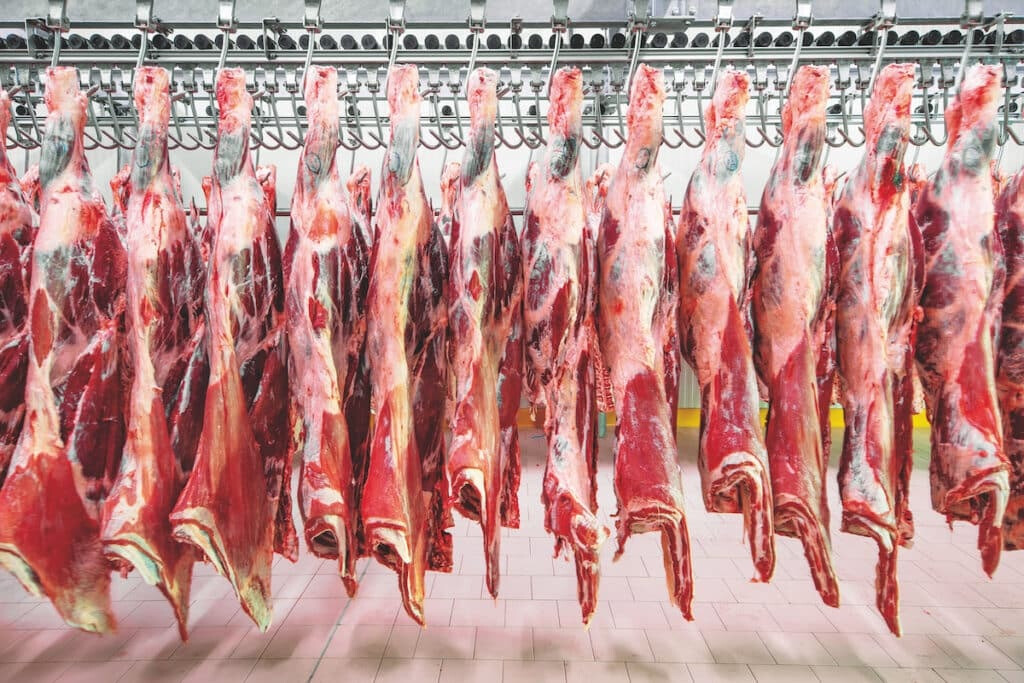
ASUNCIÓN, Paraguay – Paraguay is aggressively pursuing the expansion of its beef exports into the burgeoning Southeast Asian market, targeting countries such as Singapore, Japan, South Korea, and the Philippines. This strategic move aims to diversify existing markets and establish new export hubs, with the ambitious goal of doubling the potential consumer base for Paraguayan beef.
The Paraguayan Network for Investment and Exports (Rediex), in collaboration with the Ministry of Foreign Affairs and the private sector, is actively dispatching commercial missions to various regions worldwide, with a significant emphasis on penetrating the Southeast Asian market.
"Paraguay is among the top 10 beef exporting countries globally," stated Daniel Burt, Secretary General of the Paraguayan Meat Chamber (CPC). "We are producing more and better quality meat, and more markets are opening up for us."
He highlighted ongoing efforts to gain access to strategic markets, including Mexico, Japan, South Korea, Singapore, and the Philippines. Burt projects that successful market entry into these regions could potentially double the number of consumers for Paraguayan beef.
"We are undergoing an unprecedented process of market openings and the removal of sanitary barriers in Paraguay's history," Burt emphasized. "Having already opened the United States and Canadian markets, and with the Mexican market soon to follow, our focus is now firmly set on Southeast Asia, Japan, and South Korea."
The opening of these strategic markets is expected to significantly contribute to doubling the potential consumer base for the Paraguayan beef industry. In this context, Burt added that market diversification is a crucial element for the stability of the meat industry, and national efforts are focused on strengthening this to prevent potential risks.
Paraguay's Beef Industry at a Glance:
Paraguay boasts a well-developed livestock sector, underpinned by vast grasslands and favorable climatic conditions. Beef stands as one of its primary export commodities. The country has garnered international recognition for its stringent quality control systems and proactive efforts in preventing animal diseases.
The Potential of the Southeast Asian Market:
Southeast Asia presents an attractive market characterized by steady growth in meat consumption, driven by economic expansion. Rising income levels and the increasing adoption of Western dietary habits are fueling demand for high-quality beef.
Efforts to Expand Exports:
Paraguay is actively working to meet the food safety standards and import regulations of its target markets. It is also intensifying trade negotiations and promotional activities to enhance market access. Furthermore, plans are underway to strengthen the cold chain system and improve logistics efficiency to bolster export competitiveness.
Anticipated Benefits:
Successful entry into the Southeast Asian market is expected to provide a significant growth impetus for Paraguay's beef industry, leading to increased farm incomes and contributing to national economic development. Moreover, diversifying export markets will reduce reliance on specific regions, thereby enhancing resilience to external shocks.
Paraguay's proactive pursuit of market expansion suggests that Paraguayan beef may soon become a more common sight on dining tables across Southeast Asia.
Further Context and Potential Challenges:
While the outlook is promising, Paraguay may encounter certain challenges in its pursuit of the Southeast Asian market. These could include:
Competition: The Southeast Asian market is already served by established beef exporters from Australia, New Zealand, and South America (like Brazil and Argentina). Paraguay will need to effectively differentiate its product based on quality, price, or other factors.
Logistics and Infrastructure: Ensuring efficient and cost-effective transportation of beef to these distant markets, maintaining the cold chain integrity, will be crucial. Investments in logistics and infrastructure may be required.
Regulatory Hurdles: Navigating the specific import regulations and sanitary requirements of each target country in Southeast Asia will demand meticulous attention and potentially lengthy approval processes.
Cultural Preferences: Understanding and potentially adapting to the specific culinary preferences and cuts of beef favored in different Southeast Asian countries could be beneficial.
Economic Fluctuations: Economic conditions in the target markets could influence consumer demand for imported beef.
Despite these potential hurdles, Paraguay's commitment and the inherent strengths of its beef industry position it well to capitalize on the growing opportunities in Southeast Asia. The strategic focus on market diversification appears to be a sound approach for long-term growth and stability of the Paraguayan beef sector.
[Copyright (c) Global Economic Times. All Rights Reserved.]






























